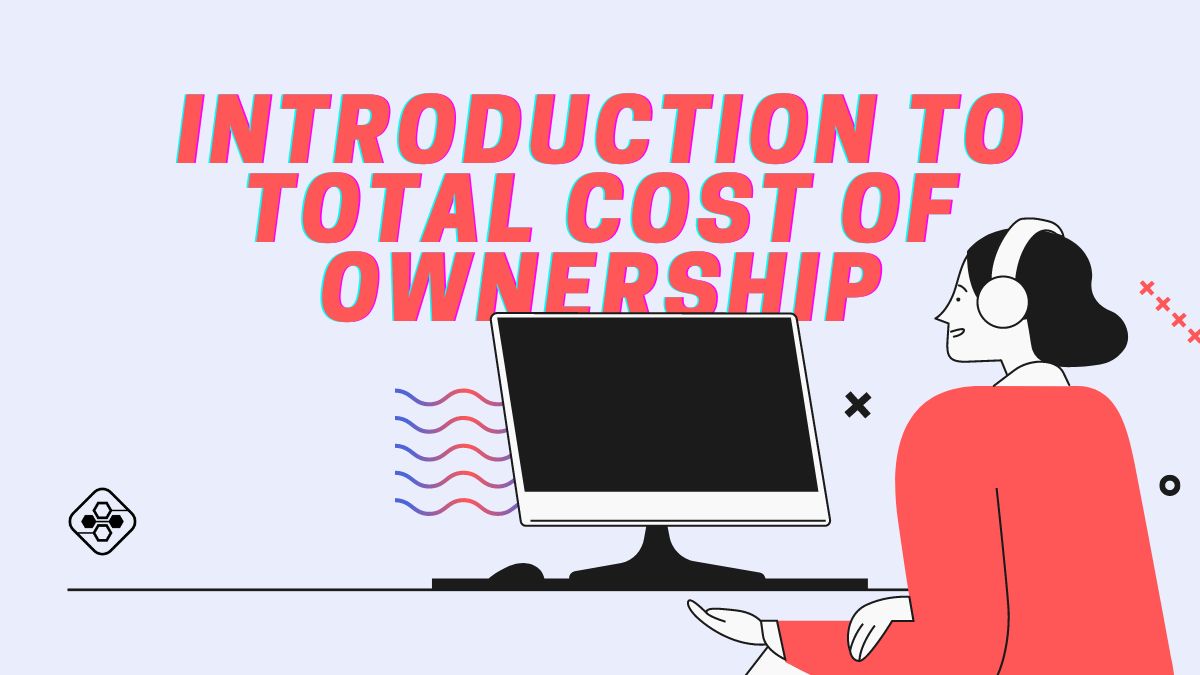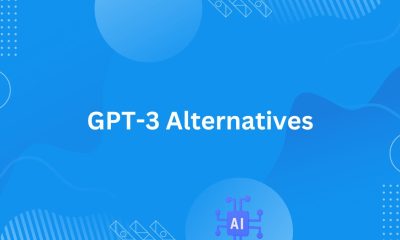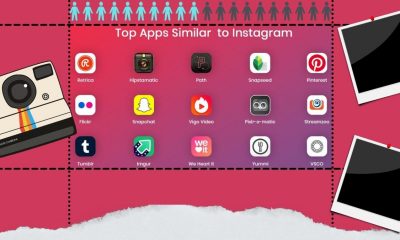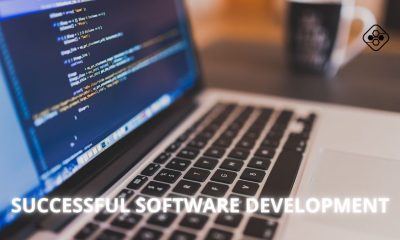Software Development
An Introduction to Total Cost of Ownership

If you’re looking for a detailed explanation of total cost of ownership in software, you’ve come to the right place. In this blog post, we’ll explore the definition of TCO, its advantages and disadvantages, and how it’s used in software development.
What is Total Cost of Ownership?
In business, the term “total cost of ownership” (TCO) is a calculation that considers all of the relevant costs associated with acquiring and using a product or service. The purpose of TCO analysis is to identify and quantify all of the direct and indirect costs that go into making a decision, so that an informed decision can be made.
There are many different factors that can go into a TCO calculation, but some of the most common include:
- Purchase price
- Shipping and handling costs
- Installation costs
- Maintenance and support costs
- Training and documentation costs
- Operating expenses (e.g., electricity)
- Disposal or recycling costs
In some cases, intangible factors such as risk or opportunity cost may also be considered. TCO analysis can be used for making decisions about anything from which technology platform to use, to what type of printer to buy for the office.
Why is TCO Important in Software?
The cost of a software application goes far beyond the initial purchase price. In fact, the total cost of ownership (TCO) of an enterprise software application can be up to ten times the initial purchase price over the course of its lifespan.
For example, an enterprise software application with an initial purchase price of $100,000 could have a TCO of $1 million over its five-year lifespan. This includes costs such as license fees, maintenance, support, training, infrastructure, and more.
Thus, when considering the purchase of a new software application, it is important to consider the TCO. In many cases, a software application with a higher upfront cost may have a lower TCO than a cheaper alternative.
To calculate the TCO of a software application, identify all costs associated with its purchase, implementation, use, and disposal. These costs can be divided into three broad categories: direct costs, indirect costs, and intangible costs.
Direct costs are those that are directly associated with the purchase and use of the software application. These include license fees, support and maintenance fees, hardware costs (if needed), implementation costs (if needed), and user training costs (if needed).
Indirect costs are those that are not directly associated with the purchase or use of the software but are still necessary to support its use. These include infrastructure costs (such as server or storage space) and indirect labor costs (such as the salaries of IT staff who maintain the system).
Intangible costs are those that cannot be easily quantified in monetary terms but still have an impact on the overall TCO. These include opportunity cost (the value of alternatives that were not chosen), business risk (the chance that the software will not meet expectations), and user satisfaction (the degree to which users are satisfied with using the system).
How to Calculate TCO for Software?
To fully compare the cost of different software products, you need to understand and calculate the Total Cost of Ownership (TCO). This metric takes into account both direct and indirect costs associated with owning and using a software product. Here’s a step-by-step guide to help you calculate TCO for software.
1. Identify all one-time costs associated with acquiring the software. This includes the price of the license, installation fees, and training costs.
2. Estimate all recurring costs associated with using the software. This includes subscription fees, maintenance fees, and support fees.
3. Determine how long you plan to use the software. The TCO calculation is more accurate when you consider a longer time period.
4. Calculate the opportunity cost of using the software. This includes the cost of not using another product (e.g., lost productivity) or not taking advantage of other available features (e.g., not being able to take advantage of new technology).
5. Add up all the direct and indirect costs to get your TCO estimate.
The Benefits of TCO
The benefits of TCO are numerous and can provide a significant return on investment for organizations that adopt it. TCO takes into account all costs associated with a product or system over its lifetime, including acquisition, operation, support, and disposal. This holistic view of costs allows organizations to make more informed decisions about their technology investments.
TCO can be used to compare alternative products or systems, assess the cost-effectiveness of different vendor support options, and predict future costs. TCO can also help organizations negotiate better prices for products and services.
Organizations that adopt TCO typically see reduced total costs, improved decision making, and increased transparency into the true cost of technology ownership.
The Risks of TCO
Any organization that wants to accurately compare the cost of alternatives—be they different suppliers, products, services, or even options within the same product—should consider using total cost of ownership (TCO) analysis. TCO is a holistic approach that goes beyond initial purchase price to take into account all of the costs incurred over the entire life cycle of an asset. These costs can be direct or indirect, monetary or non-monetary, capitalized or non-capitalized.
Despite its well-documented benefits, TCO analysis is often overlooked in favor of simpler, more easily understood metric such as initial purchase price (IPP), payback period, or return on investment (ROI). This is likely due in part to the perception that TCO analysis is too complex and time-consuming. However, the benefits of using TCO far outweigh any perceived drawbacks, and there are a number of ways to simplify the process so that it can be used in almost any situation.
There are several risks associated with not conducting a TCO analysis when making decisions about alternative products or suppliers. The most obvious risk is that decision makers could choose the option with the lowest IPP without considering other important factors such as long-term support costs or hidden fees. This could lead to increased costs down the road as well as missed opportunities to save money. Additionally, failing to take into account all of the relevant costs can give decision makers a false sense of security about their choices and lead to poor decision making in general. Finally, not conducting a TCO analysis could create problems for an organization if it is ever audited or required to justify its decisions to stakeholders.
How TCO Can Help You Make Better IT Decisions
TCO, or total cost of ownership, is a methodology for analysts, businesses, and organizations to use when making technology decisions. TCO takes into consideration all of the costs associated with a technology over its entire lifecycle – from acquisition to operations to disposal. This includes not only the initial purchase price but also the costs of implementation, upgrades, support, and training. By taking all of these factors into account, TCO provides a more accurate picture of the true cost of a technology than simply looking at the purchase price alone.
In recent years, there has been an increased focus on TCO as a way to make better IT decisions. As organizations have become more reliant on technology, the costs associated with it have become more important. With TCO analysis, businesses can make informed decisions about which technologies will be most cost-effective in the long run.
There are several benefits to using TCO analysis:
- It provides a more complete picture of the costs associated with a technology;
- It can help identify hidden or unexpected costs that might otherwise be overlooked;
- It can help compare different technologies on a level playing field;
- It can help justify investments in new technologies.
TCO analysis is not without its challenges, however. It can be time-consuming and expensive to gather all of the necessary data for an accurate TCO calculation. In addition, TCO does not take into account other important factors such as business value or risk. As such, it should not be used as the sole decision-making tool when considering new technologies.
The Bottom Line on TCO
At its most basic, total cost of ownership (TCO) is the sum of all the costs associated with owning and operating a product or system over its lifespan. In business, TCO is a valuable metric for evaluating different purchase options and comparing long-term costs. TCO can be applied to almost any large purchase, from office equipment to enterprise software.
There are numerous factors that contribute to TCO, including initial costs, ongoing maintenance and support fees, training expenses, and opportunity costs. TCO analysis allows businesses to take a holistic view of all these factors and compare different purchase options on an apples-to-apples basis.
In many cases, the upfront cost of a product or system is only a small fraction of its true cost. For example, the initial price of a car is only one part of its TCO; other aspects like fuel efficiency, insurance rates, and repair and maintenance costs must also be considered. The same is true for enterprise software: while the initial price tag may be one of the main deciding factors in the purchasing process, it’s important to consider all the other costs that will be incurred over the course of several years.
By taking into account all the associated costs—not just the initial purchase price—TCO analysis can help businesses make more informed decisions about which products or systems are right for them in the long run.
-

 Marketing Tips2 days ago
Marketing Tips2 days agoWhat is my Instagram URL? How to Find & Copy Address [Guide on Desktop or Mobile]
-

 Business Imprint3 days ago
Business Imprint3 days agoAbout Apple Employee and Friends&Family Discount in 2024
-

 App Development3 days ago
App Development3 days agoHow to Unlist your Phone Number from GetContact
-

 News4 days ago
News4 days agoOpen-Source GPT-3/4 LLM Alternatives to Try in 2024
-

 Crawling and Scraping4 days ago
Crawling and Scraping4 days agoComparison of Open Source Web Crawlers for Data Mining and Web Scraping: Pros&Cons
-

 Grow Your Business2 days ago
Grow Your Business2 days agoBest Instagram-like Apps and their Features
-

 Grow Your Business4 days ago
Grow Your Business4 days agoHow to Become a Prompt Engineer in 2024
-
Marketing Tips2 days ago
B2B Instagram Statistics in 2024











